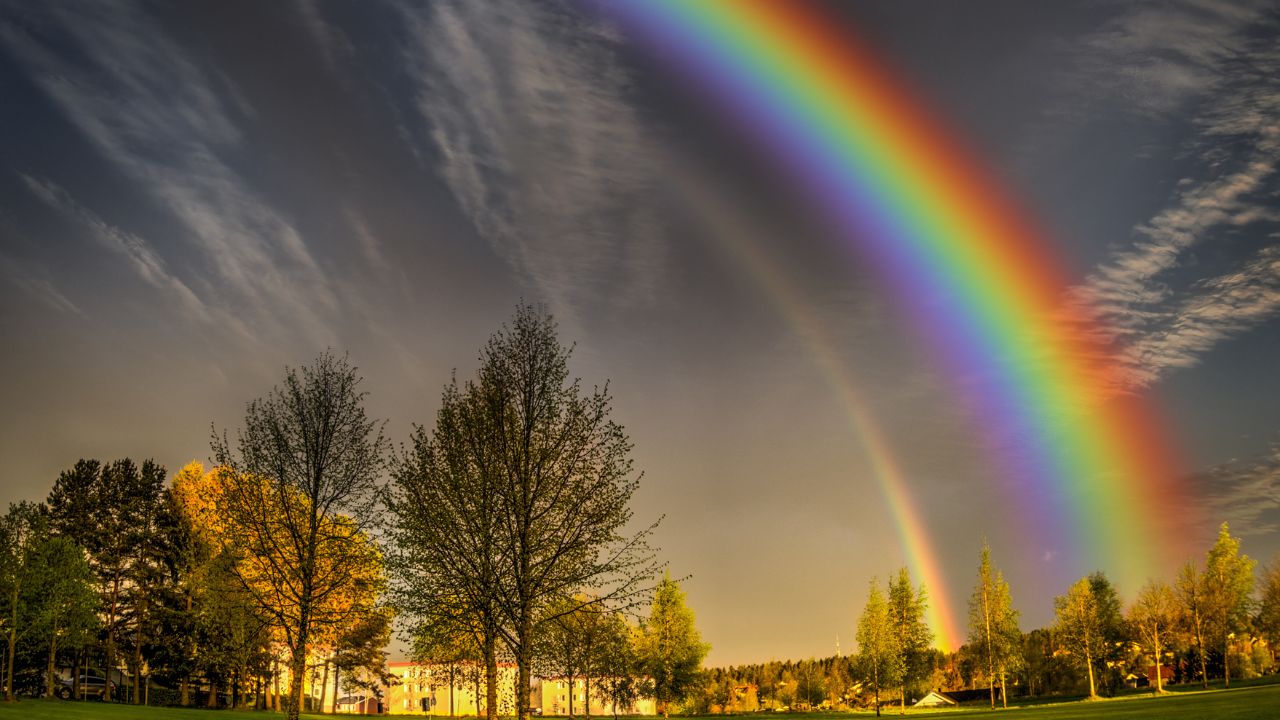Table of Contents
Have you ever stopped to admire a rainbow in the sky? The mesmerizing display of colors is truly one of nature’s most beautiful phenomena. But have you ever wondered how those colors arrange themselves so perfectly? Why does red always appear on top while violet stays at the bottom? The answer lies in the science behind the rainbow color order, and it’s not just about aesthetics. Understanding this process can shed light on important principles of physics and optics that affect our daily lives. In this blog post, we’ll explore how rainbows are formed and why their color order matters more than we may think. So grab your umbrella and join us on this colorful journey!
What is the science behind the rainbow color order?
Rainbows are the result of a fascinating process that involves both physics and optics. The colors we see in a rainbow are actually different wavelengths of visible light, each with its own unique frequency.
When sunlight enters a raindrop, it refracts or bends at an angle depending on its wavelength. This separation causes the white light to split into its constituent colors – red, orange, yellow, green, blue, indigo and violet (ROYGBIV).
The red color has the longest wavelength and is bent the least while violet has the shortest wavelength and is bent most. The other colors fall between these two extremes creating a spectrum of colors.
This phenomenon is known as dispersion where each color travels through raindrops at slightly different angles causing them to spread out and form an arc-like shape.
Interestingly enough, this same principle applies to prisms where they can also separate white light into various colors creating stunning visual effects.
Understanding this scientific process behind the rainbow’s color order helps us appreciate nature’s beauty even more while providing valuable insights into how light behaves around us.
How is the rainbow color order formed?
The formation of the rainbow color order is a fascinating process that involves the reflection, refraction, and dispersion of light. When sunlight passes through water droplets in the air, it is refracted or bent at an angle. This bending separates white light into its different colors.
Each color has a different wavelength and bends at a slightly different angle, resulting in the characteristic arc shape we see in rainbows. The red end of spectrum has longer wavelengths while violet end has shorter ones.
The colors are arranged in a specific sequence from top to bottom: red, orange, yellow, green blue indigo and violet (ROYGBIV). This order never changes because it’s based on their respective wavelengths.
Interestingly enough though, you can see multiple rainbows stacked on top of each other when there is more than one reflection inside water droplets like after heavy rains or nearby waterfall mist. These secondary bows have inverted color orders compared to primary bow with red being on outer part instead of innermost which occurs due to an extra internal reflection within drops before exiting out.
Understanding how rainbow color order forms helps us better appreciate nature’s beauty around us as well as understand some basic principles about optics and physics involved!
Also Read : The Science Behind Red: Understanding the Colors That Make It
Why does the rainbow color order matter?
The rainbow color order may seem like a simple, natural phenomenon that we encounter on rainy days or while staring at a prism. However, understanding the science behind it can have significant implications in various areas of our lives.
For instance, knowing the sequence of colors in a rainbow is essential for meteorologists who use this information to analyze atmospheric conditions. By studying how light interacts with water droplets at different angles and temperatures, scientists can gain insights into weather patterns and predict severe weather events accurately.
Moreover, artists and designers often use the color spectrum as a basis for creating aesthetically pleasing designs. Understanding how each hue relates to one another in terms of brightness and saturation allows them to create visually harmonious compositions that evoke specific emotions or convey certain messages.
In addition, learning about the rainbow color order has important educational value as well. It serves as an excellent introduction to topics such as physics (light behavior), mathematics (angles and geometry), and even cultural studies (rainbows hold significance in many mythologies around the world).
Whether you’re interested in art or science or simply want to appreciate nature’s beauty more fully; understanding why rainbow color order matters opens up new perspectives on the world around us.

How can we use this knowledge to improve our lives?
Understanding the science behind rainbow color order can help us improve our lives in various ways. For instance, it can enhance our appreciation of nature and its wonders. By understanding how rainbows are formed, we gain a deeper appreciation of this natural phenomenon that has fascinated humans for centuries.
Moreover, knowing about the rainbow color order can also inspire creativity and innovation in various fields such as art, design and even technology. With an understanding of how colors interact with each other to create beautiful patterns, designers can use these principles to create aesthetically pleasing designs that catch the eye.
In addition to inspiring creativity, knowledge about the rainbow color order is also useful in practical applications such as lighting design. Lighting professionals understand how different light wavelengths combine to produce specific colors which help them choose appropriate lighting schemes for different spaces.
Furthermore, by studying the science behind rainbow color order we learn about optics and physics which have significant implications across many other scientific disciplines including medicine and engineering. This knowledge enables scientists to develop new technologies that benefit society at large.
Understanding the science behind rainbow color order allows us to appreciate nature’s beauty on a deeper level while also providing insights into creative endeavors like art or design as well as more technical fields like engineering or medicine where advances based on optical principles have led to numerous breakthroughs over time!
Conclusion
The science behind the rainbow color order is fascinating and offers us a deeper understanding of our world. The colors we see in a rainbow are not just beautiful but also significant in how they are formed and arranged. From rainbows to prisms to even our own daily lives, the concept of color order plays an important role.
By knowing more about how colors interact with each other and how they can affect our emotions and behavior, we can use this knowledge to improve our lives. For instance, using certain colors in interior design or clothing choices can have an impact on mood and productivity.
The next time you see a rainbow, take a moment to appreciate its beauty while also acknowledging the science behind it. Remember that each color has its significance based on where it falls within the spectrum. By understanding this concept better, we can enhance our appreciation for everything around us that is filled with vibrant hues!








